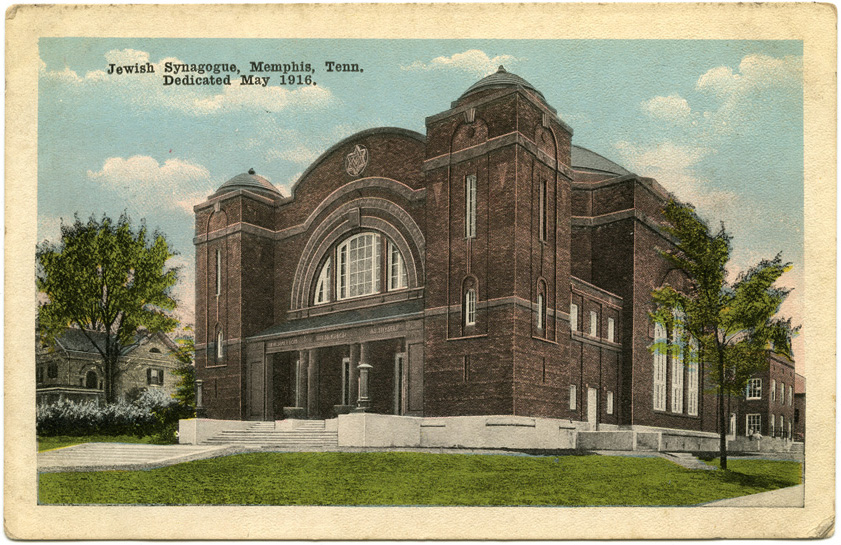5.11 Memphis, Tennessee
Children of Israel, Poplar Avenue and Montgomery Street
Walk C. Jones Sr. and Max Furbringer, architects, 1916
Memphis Paper Co., Memphis, Tennessee; no date
Memphis’s Children of Israel (later renamed Temple Israel) is an impressive Byzantine-inspired building dedicated in 1916. When the congregation, the oldest and largest in Tennessee, moved in, its former building was sold to a new Orthodox congregation that had adopted the name of the disbanded Beth El Emeth.

In 1882, the congregation purchased land on Poplar Avenue and built a new synagogue, dedicated in January 1884. The Moorish-style building had two tall spires flanking a large horseshoe-arched main entrance, above which was a large round window decorated with a Star of David. The striking building cost $40,000 and was a sign of the new prominence of Memphis’s Jewish community. The congregation continued to grow and, by 1905, had 262 members.
Still, by 1916, the big Poplar Avenue building was outdated. The congregation was even larger, and a new site was purchased two miles to the east. The new temple, designed and built by local architects Walk C. Jones Sr. and Max Furbringe, is an early American example of a domed synagogue, with a large central dome and two smaller flanking domes—a type that would become widespread in the 1920s. The building still retains the front two towers. The sanctuary reportedly sat 1,200 and had an enormous $10,000 ($220,000 in 2020) organ. Worshipers entered through three sets of double doors, passing under an entablature carved with the biblical verse fragment, “THOU SHALT LOVE THY NEIGHBOR AS THYSELF” (Leviticus 19:18).
The building included an auditorium with a stage and 14 classrooms for the religious school. This more expansive complex is indicative of changes in the synagogue function: in the early 20th century, synagogues increasingly came to serve as Jewish community centers. This was especially the case in Memphis, where Temple Israel was the only Reform synagogue. Founded by mostly German-speaking Jews in 1853, it was initially led by cantors, until, in 1858, Jacob Peres was hired as rabbi.
In 1976, the congregation moved from the 1916 building to a 30-acre wooded campus at 1376 East Massey Road in East Memphis. The new building was designed by Francis Gassner of Gassner, Nathan, and Partners, with Percival Goodman as consulting architect. Besides the 1,500-seat main sanctuary, the modern complex includes a 300-seat chapel and 32 classrooms.
The older building was sold to Mid-America Baptist Theological Seminary, which occupied the site until 1996, after which it became the Memphis Academy of Science and Engineering. Temple Israel took with them the ner tamid (eternal light), Torah ark doors, and Ten Commandments wall decoration, all of which were installed in the new chapel.
